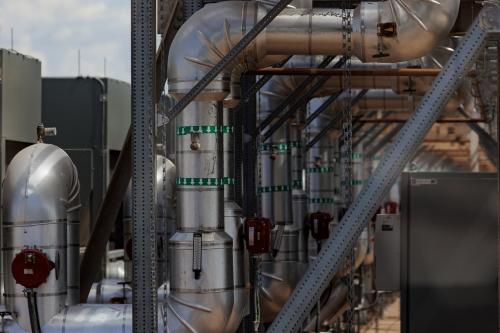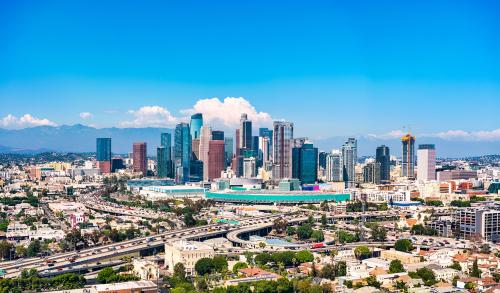Even as Congress continues to stall on new surface transportation legislation, ports are gearing up nationally for a wave of new projects that will drive future commerce and economic growth. Behind this activity is President Obama’s signature today on a bipartisan $12.3 billion water bill that will help improve harbors, waterways, levees, and ecosystems across the United States.
While the Water Resources Reform and Development Act (WRRDA) addresses a number of policies such as municipal water finance, it also marks an important step in establishing a national freight policy.
The biggest freight reform targets the Harbor Maintenance Trust Fund (HMTF), which helps ports maintain their current infrastructure. The new law ensures all user fees will now go back to the nation’s harbors by 2024; the HMTF had been regularly raided for other activities in the past. WRRDA adds berth dredging as a qualified maintenance activity, giving ports with fewer shipping channel problems another method to receive federal dollars. It also includes equity-driven spending formulas, spreading money across ports of all sizes and locations.
The bill addresses inland waterways, too, which makes sense considering they carry over 500 million tons of goods each year (PDF). WRRDA makes a purposeful effort to address the backlog of inland projects by fast-tracking completion of the long-delayed Olmsted Locks on the Ohio River. In addition, by laying out other reforms like financial reporting requirements and risk-based cost estimates, the bill aims to accelerate the completion of many other projects, helping businesses and households in major inland water markets like Cincinnati, St. Louis, and Memphis realize long-term economic benefits.
And to help pay for more of these freight projects, WRRDA institutes a number of innovative financing mechanisms. There is a new public-private pilot to help the Army Corps jointly develop 15 projects with either public or private sector interests. The Army Corps’ inland waterway projects can also now accept nonfederal monies.
Yet while Washington deserves credit for passing major legislation much work remains regarding waterborne commerce and national freight policy in general.
For all the focus on equity in harbor investment, WRRDA still largely ignores the fundamental economies of scale underlying U.S. port activity. Across the whole country, a group of 17 metropolitan areas move over 80 percent of all freight by value and weight. That means any equity-driven system shifts resources away from the markets doing most of the country’s heavy lifting. This punishes our major container ports like Savannah, energy ports like New Orleans, and bulk markets like Portland.
And as the United States builds off the momentum of WRRDA and begins to ramp up consideration of a national freight policy, prioritization will be just as important. The country desperately needs a policy framework that recognizes how some metropolitan areas—places rather than projects—are simply more important in driving national goods trade. That’s why the upcoming surface transportation debates will be crucial. We need to ensure our seaports and airports have efficient road and rail connections to help our metropolitan areas efficiently access global markets. The same can be said for national logistics hubs that face major roadway congestion and clogged intermodal facilities.
National policies must recognize that place matters.
The Brookings Institution is committed to quality, independence, and impact.
We are supported by a diverse array of funders. In line with our values and policies, each Brookings publication represents the sole views of its author(s).



Commentary
Water Resources Bill: What It Means for Ports and Place in American Freight Policy
June 10, 2014